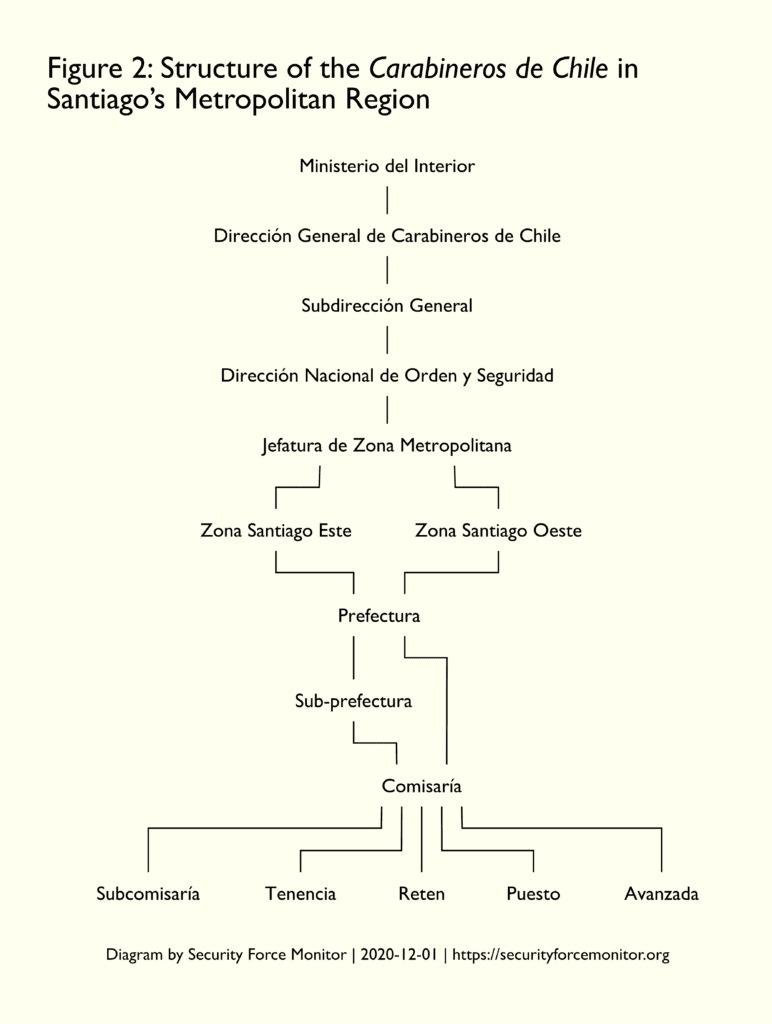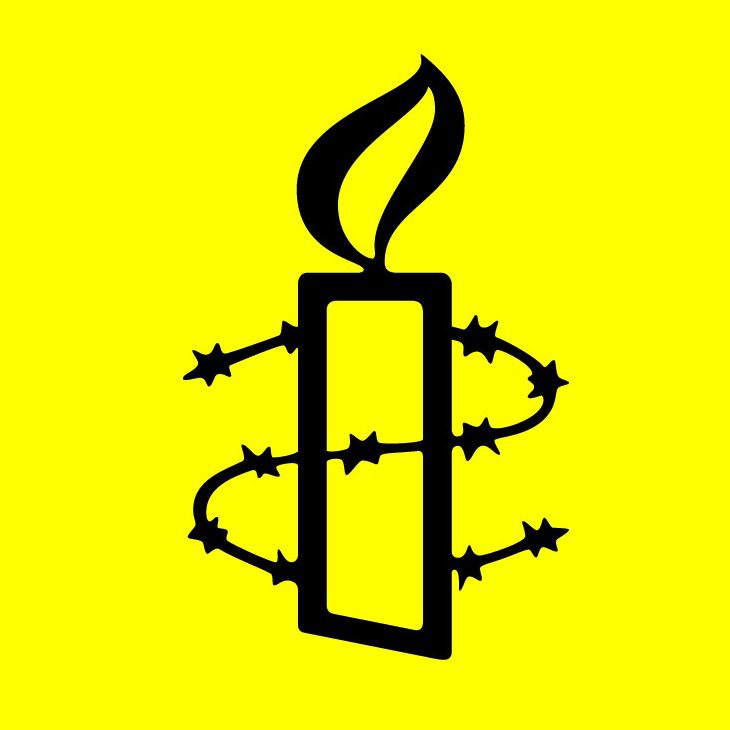In mid-October 2019, protests erupted across Chile in response to a fare increase on public transport. Regular protests continued for months as protesters’ demands expanded to include calls for a more just society in which the state guarantees basic rights such as those to health, water, quality education and social security. State security forces—primarily the Carabineros de Chile (Chilean national police)—responded to the protests with widespread use of force, causing thousands of injuries. Amnesty’s Crisis Evidence Lab and Digital Verification Corps analyzed over 200 photos and videos documenting widespread human rights violations by the Carabineros between 18 October and 30 November, 2019, including excessive use of force, torture and other ill-treatment,, and violation of the right to personal integrity.
The disproportionate number of injuries and evidence of repeated excessive use of force suggests that it could have been a deliberate policy of the Carabineros to injure protesters. Responsibility for such actions would extend beyond individual officers to the highest levels of the Carabineros’ command. However, to allocate responsibility at the command level requires a detailed understanding of its structure. To help establish this, Amnesty International partnered with Security Force Monitor (SFM), a non-profit research group that analyzes open-source records, to map command structures, locations and areas of operations of security forces and investigate their potential connections to alleged human rights violations. In this post, SFM shares the methodology, tools, and techniques that they used to reveal aspects of the Carabineros de Chile chain of command.
Public information on security forces
Absent direct testimony or documentation, how can human rights researchers identify the commanders of military or police units implicated in human rights violations? Contrary to common belief, there is a great deal of public information on security forces around the world. Generally, these are a different body of sources than the ones that an open source investigator would use to understand an individual incident, ranging from laws and regulations to government websites, budgets, press releases and other official communications. So how do we process all the information and find what we need to understand and map the structure and chains of command of the security forces? Security Force Monitor’s methodology gives us a tool to organize the information contained in these varied sources into a cohesive and accessible dataset for use by researchers. In the following sections, we will demonstrate how SFM used this methodology to build a detailed structure of the Carabineros’ chain of command—research which informed Amnesty International’s 2020 report Eyes on Chile: Police violence and command responsibility during the period of social unrest.
Step One: Build a General Structure
The first step is to build a general structure of the Carabineros, its chain of command, areas of operation and locations.
The Carabineros, like most state security forces, are established through legislation or decree— records of which can often be found in open sources such as government websites. Discovering the relevant legislation and untangling what it means can be challenging and time-consuming. It can, for instance, be regularly amended as a chain of command and/or areas of operation change.
For us, therefore, the first step was to find and analyze the laws and other official documents related to the chain of command and area of operations of the Carabineros. In this case, we looked at the Ley Orgánica Constitucional de Carabineros, Reglamento de Organización de Carabineros de Chile Nº1 (Decreto 77 del Ministerio de Defensa del 1 de marzo de 1989) and the Orden General 2492 (May 2017). A close read of these laws allowed us to draw up the following basic structure:

The information drawn from official documents served as a “guide book” which can be used to link different pieces of information found later in the research.
Step Two: Research Specific Units of Interest
The next step was to visit the official Carabineros website. This site contains a large quantity of freely available information on the location and areas of operation of specific units—although it did not reveal how these units are linked by the chain of command. The official website organizes the information in a way that makes clear that a Zona is above a Prefectura and that beneath these are Comisarías, Subcomisarías, Tenencias, and Retenes (see Figure 1).
However, it is not clear which unit is above which in the command hierarchy, nor at which level orders originate. Combining the information from the Carabineros’ site with the relevant laws related to the structure of the Carabineros helped to build a more complete picture of the chain of command for the units that SFM was interested in; in this case, the ones operating in Santiago’s Metropolitan Region during the protests from October to December 2019:

Although our focus was on the structure of the Carabineros within the Santiago Metropolitan Region, we set up the research to be able to work on a far greater scale to document, track and analyze data on potentially thousands of specific units and commander personnel associated with the security forces. For example, a close look through the contact database on the Carabineros website can give us a bigger picture: eight Zonas (e.g. Zona Metropolitana), 16 Regiones (e.g., II Antofagasta), 31 Prefecturas (e.g., Prefectura Chiloé No. 26), 340 Municipios (e.g., Alto Hospicio), 212 Comisarías (e.g., 3A. Comisaría Algarrobo), 98 Subcomisarías (e.g., Subcomisaría Antofagasta Norte), 377 Retenes (e.g., Reten Poconchile F), and 203 Tenencias (e.g., Tenencia Viluco). Therefore, without adopting a highly structured research method like the one developed by Security Force Monitor, it would be difficult to scale up the investigation if needed.
Step Three: Structured Media Research
With this structure in place, it is possible to start filling in the knowledge gaps and begin to add details about specific units, such as their areas of operations, personnel, bases and so on, and begin linking them to allegations of abuses. For example, in this specific case, it served to identify some of the units that operated near the locations where Amnesty International reported human rights violations, or the commander in charge of a specific unit of Carabineros that was involved in excessive use of force.
Generally, up-to-date and detailed information about the security forces is scattered around the web on different media outlets’ sites; this information, however, is usually not organized or classified. Here, it is a matter of identifying reliable and useful sources for the investigation and reviewing each of them over the period of time on which our investigation is focused. The media will give us relevant data like the names of commanders, operations and activity of units in specific areas, headquarters and units’ locations, activity types and, in some cases, allegations of violence that may amount to human rights violations.
We refer to this stage of the methodology as structured media research, encompassing the identification, analysis and processing of the relevant information from each accessible media outlet, for each day of the timeframe of the researched events. For this investigation, this meant reviewing and processing all the media outlets with content relevant to the Santiago Metropolitan Area protests available online from 18 October to 31 December, 2019 mentioning the involvement of the Carabineros. This process took an average of six hours daily for a full month and we were able to identify more than 100 relevant media events that we organized in a spreadsheet, including their date and time, location and event description.
In this step of the research, the challenges were both complicated and contradictory. In some cases, the difficulty resided in an over-abundance of information and repetition of data across different platforms, making it difficult to process and time-consuming to review. The second challenge was a lack of information regarding certain units and date ranges, for example, special forces units. These are units which we find are often more challenging to investigate using the SFM open-source methodology than others. These challenges can serve as “red flags” for researchers on the ground—the gaps in publicly available information are an area on which they can focus.
Step Four: Putting all the pieces together
The final step was a question of connecting the dots of our research. Which unit was mentioned by the media as being involved in a certain protest? Did that unit have jurisdiction over the area of the event? Which unit was its superior (and in charge of giving the orders)? Having mapped the chain of command, all these questions were easier to answer, leading to a final document outlining the complete structure of Carabineros de Chile countrywide and within the Santiago Metropolitan Area, the location and jurisdiction of each unit, and a spreadsheet listing more than 100 media events related to the protests in Santiago.
Using Security Force Monitor’s methodology for open-source research provided the capacity to process and analyze large amounts of information and turn this into structured datasets to help other researchers. The key takeaway, therefore, of mapping the structure of security forces, their chains of command, locations, jurisdictions and areas of operations goes far beyond organizational matters. It is a valuable asset that can be used to inform a wider investigative process, including to support first-hand research, as evidenced by this collaboration with Amnesty International for its Eyes on Chile report.


